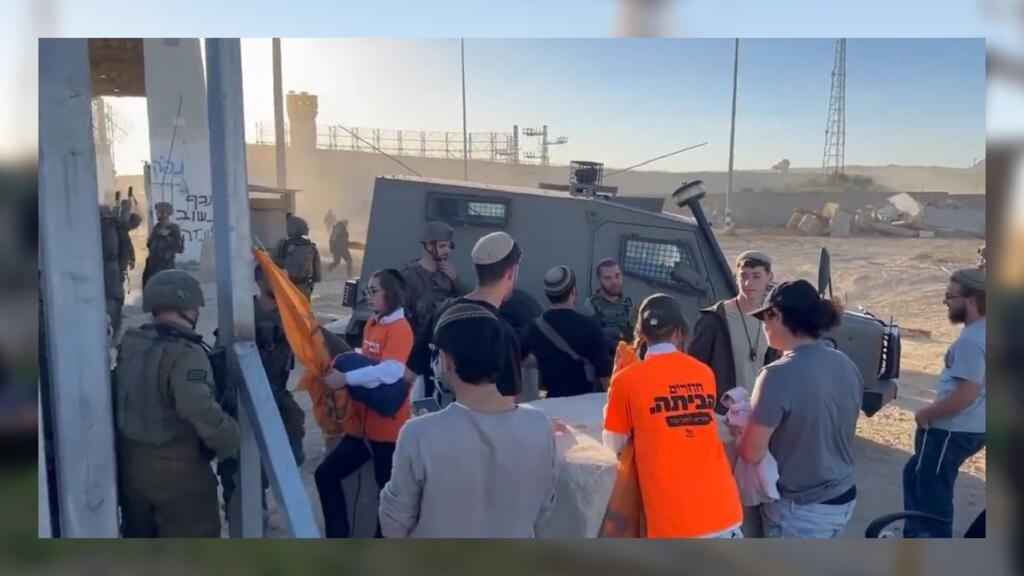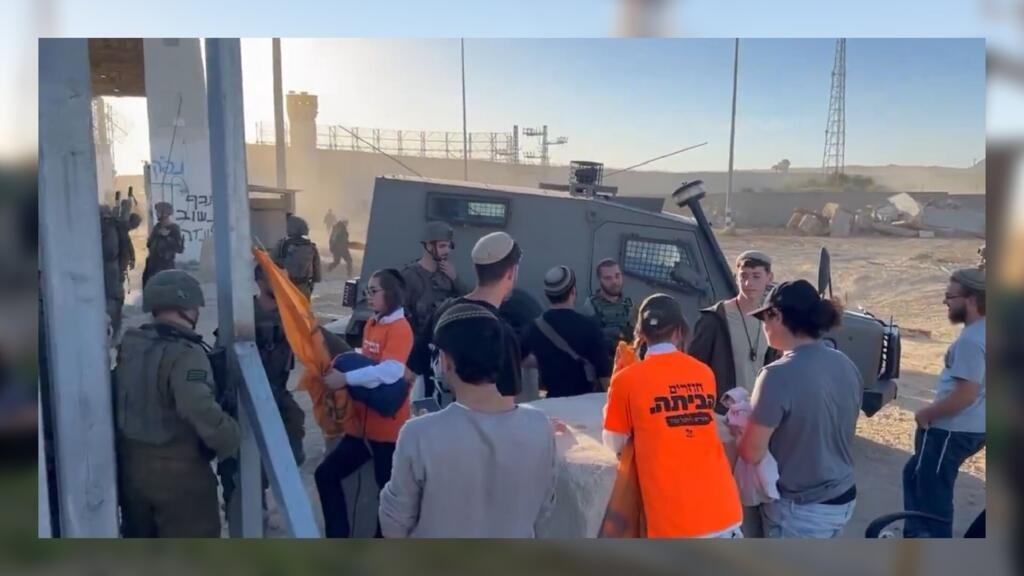A small group of Israeli protesters briefly entered the Gaza Strip via the Erez border crossing in late February. A few days before this illegal incursion, several videos appeared online showing a group of Israeli farmers trying to drive into Gaza on their tractors. These protesters want to restore Israeli settlements in Gaza, 19 years after Israel’s 2005 disengagement from the zone, when the government dismantled 21 settlements that had been home to some 8,000 Israelis.
Advertising
More than 100 people gathered on February 29 to hold a “resettlement protest” in the Israeli city of Sderot. At least that’s where the protest began. Sderot is located just a few kilometres from Gaza and the protesters, who want to reestablish Israeli settlements in Gaza, said their aim was to “protest inside Gaza”.
The march reached the Erez border crossing, which marks the dividing line between Israel and Gaza. Videos showed that, in spite of the soldiers present, a number of people managed to enter the Israeli military zone on the border. This zone is demarcated by a barrier and then a wall, which separate Israel from Gaza.
Now: Israeli right wing settlers enter Eretz crossing an try to build a structure near the border wall with Gaza. They are calling the government to allow them to settle in Gaza pic.twitter.com/fJXTfJsYxk
— Oren Ziv (@OrenZiv_) February 29, 2024
A small number of the protesters slipped past the soldiers and made it some 500 metres into Gaza. “We will all soon return here,” one of the protesters is heard saying in an amateur video as soldiers with the Israeli Defence Forces (IDF) herd them back to the border. “Even the soldiers evacuating us want to be here,” he adds.
At one point, the man filming the video refers to Gush Katif, a bloc of former Israeli settlements in Gaza that was dismantled back in 2005 as part of Israel’s unilateral disengagement from Gaza. Now, however, a number of settler movements want to bring Gush Katif back.
Gaza | “We are in Gaza, how fun! Back to Gush Katif We will build here 10 times as we did before. Everyone come! Even the soldiers evicting us, they really want us to be here”
Settlers invading Gaza (incl son of an Israeli minister). The army is peacefully escorting them 1/2 pic.twitter.com/VWLBmwTpBJ
— Younis Tirawi | يونس (@ytirawi) March 1, 2024
The IDF published a statement that night, recognising that about 20 protesters “violently broke through an IDF checkpoint manned by soldiers” and had “crossed into Gazan territory”.
‘To establish a Jewish settlement’
The protesters were decked in bright orange t-shirts – the same colour worn by people who opposed the Israeli disengagement plan back in 2005. Other protesters managed to stay in the military zone between the wall and barrier for several hours, long enough to build several wooden structures along the wall that separates Gaza from Israel. The army did not stop them erecting the structures.
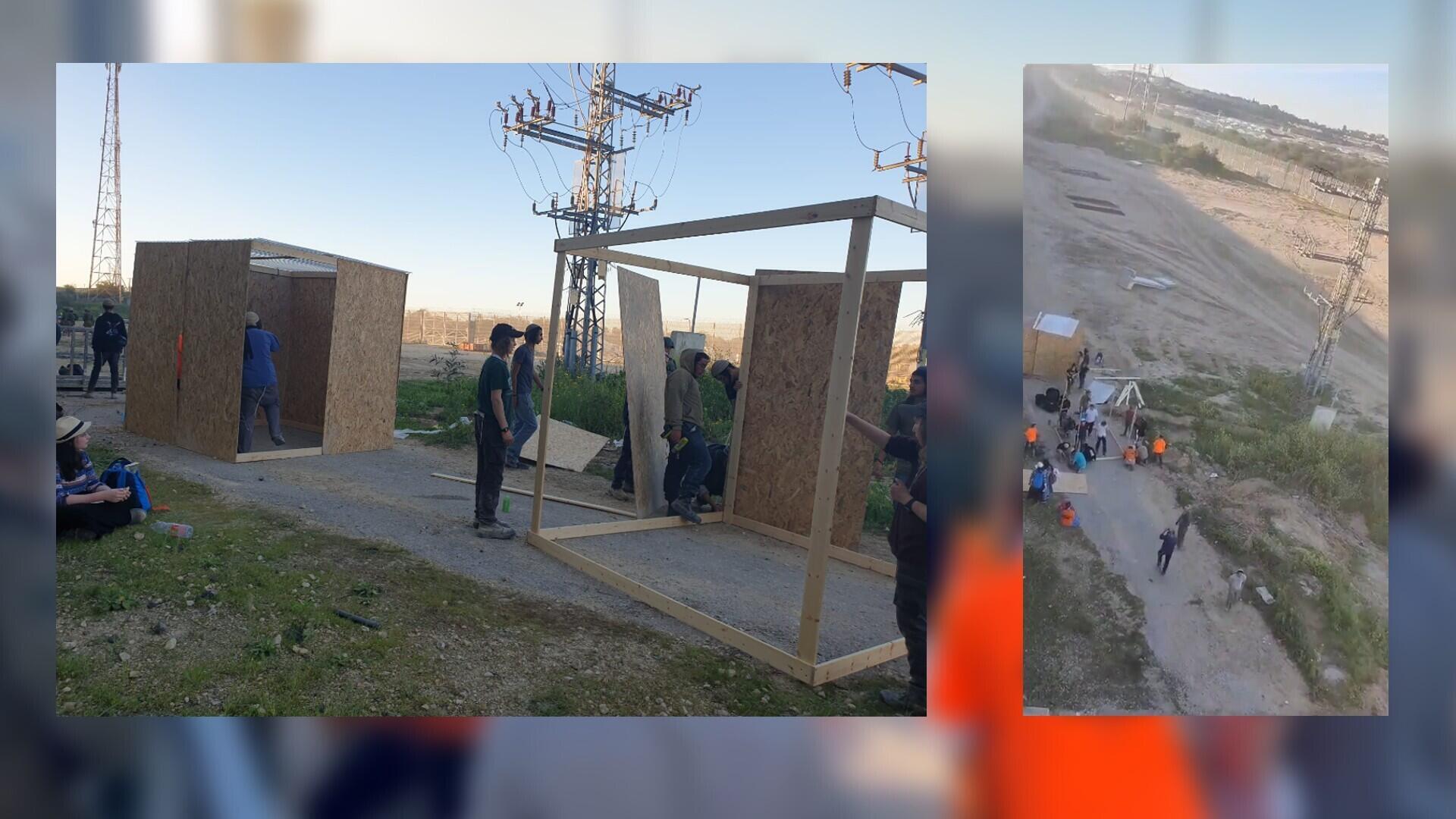
The structures put together by the protesters were prefabricated, built to look like the outposts common in Israeli settlements in the West Bank. In a video showing the protesters building these structures, the person filming says “Gaza belongs to the Israeli people”.
Before the protest began, our team spoke to an organiser of the protest, Yair Ben Baruch, and asked him about its objectives.
“Our aim is to march to the Gaza Strip and even enter it, demanding Jewish settlement,” he said.
Ben Baruch, who said that he grew up in an Israeli settlement in the West Bank, said that he ran an organisation called “Shavei Aza” [Editor’s note: “Those who return to Gaza”], whose aim is to “establish a Jewish settlement in the Gaza Strip”.
The protesters who entered Gaza were taken into custody by the police according to the IDF, but were then released without charges. The IDF did not explain how so many protesters were able to stay in the military zone for several hours.
Tractors at the border
This is not an isolated incident. On February 22, a group of farmers from the Golan Heights who call themselves the “Portrait of Victory” also tried to enter the Gaza Strip.
Under the slogan “Where the plow passes, that’s where the border will be set”, farmers called on others to seize fields in Gaza by simply moving in and beginning to plough them.
Several videos of their protests, which were supposedly supervised by the IDF, show farmers driving alongside the border fence and then crossing into the no-go military zone.
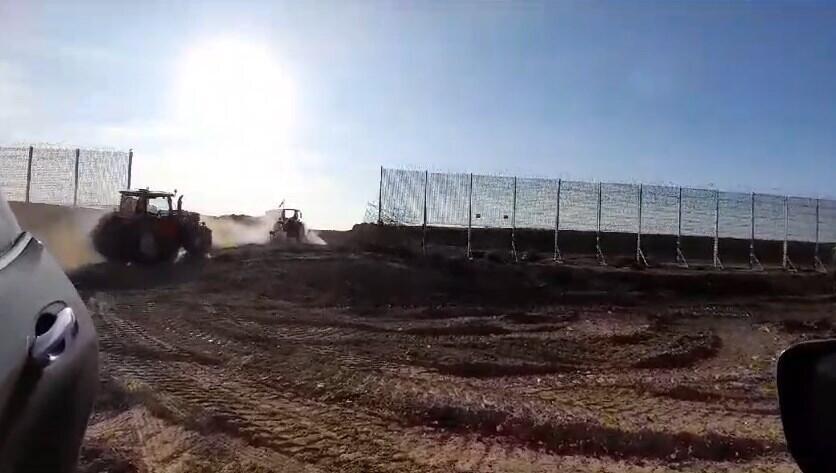
Some posts on Telegram and Twitter claimed that the tractors entered Gaza and then ploughed fields within the territory.
When our team spoke to the IDF, however, they said that the protesters “at no point” entered Gaza. However, they did say that the farmers’ tractors entered the no-go Israeli military zone and were just a few steps from the separation between Gaza and Israel, “contrary to instructions”.
‘The idea of resettling Gaza isn’t new’
Ori Givati, advocacy director for the NGO Breaking the Silence, an organisation of Israeli veterans who want to end the Israeli occupation of the Palestinian territories, says that many of Israel’s politicians support these protests – and resettlement in general.
“These groups are new, but this idea is not a new idea, as we’ve always heard of people willing to resettle in Gaza. What is new is the legitimization given to it by the government, by Knesset members and maybe worst of all, by a lot of Israeli society”.
Eleven ministers from Prime Minister Binyamin Netanyahu’s government took part in a conference on January 28, calling for the return of Israeli settlements in Gaza and the “voluntary migration” of Palestinians.
“It would be a shame to wait another 15 years to go back to Gush Katif. This is the time to return to home, to build settlements, for the death penalty for terrorists and the time for victory,” said far-right Israeli politician and Minister of National Security Itamar Ben Gvir in his speech at the conference.
During this event, a map of Gaza set up in the reception showed different locations in the Strip where these politicians want settlements.
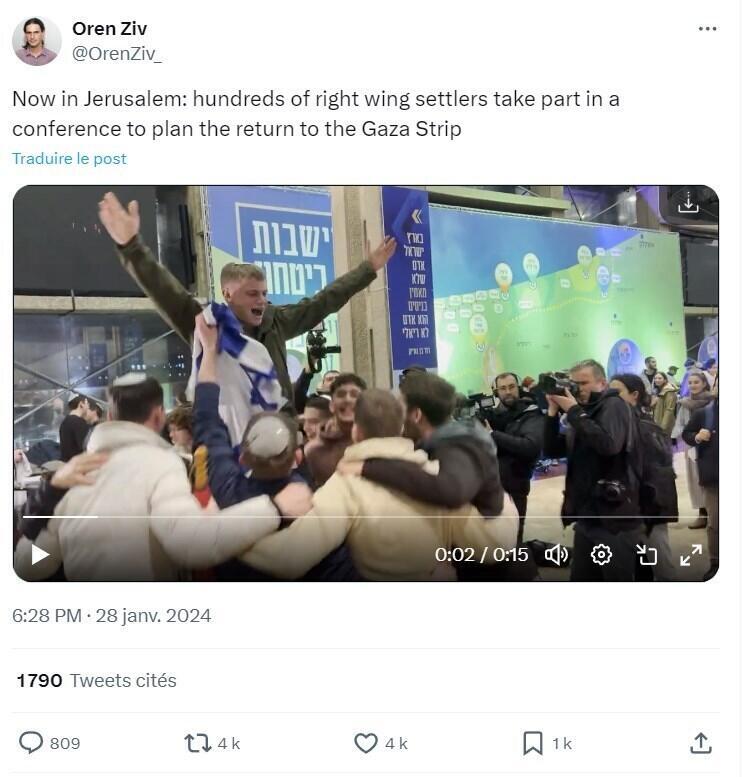
Positions like these directly oppose the plan for Israeli disengagement adopted by Israeli prime minister Ariel Sharon in 2005, which closed down the 21 Israeli settlements in Gaza and rehoused the 8,000 displaced settlers.
This led to a number of clashes between Israeli forces and the displaced population, some of whom still want to return to the settlements.
“In 2005 we did the disengagement plan and many are now using this fact to say that because of that the 7th of October happened”, Ori Givati says. “They are exploiting the 7th of October for their own needs in order to justify resettlement and put, of course, Palestinians in danger, and also Israelis and soldiers in danger, just to fulfill their messianic goals.”
Source: observers.france24.com
